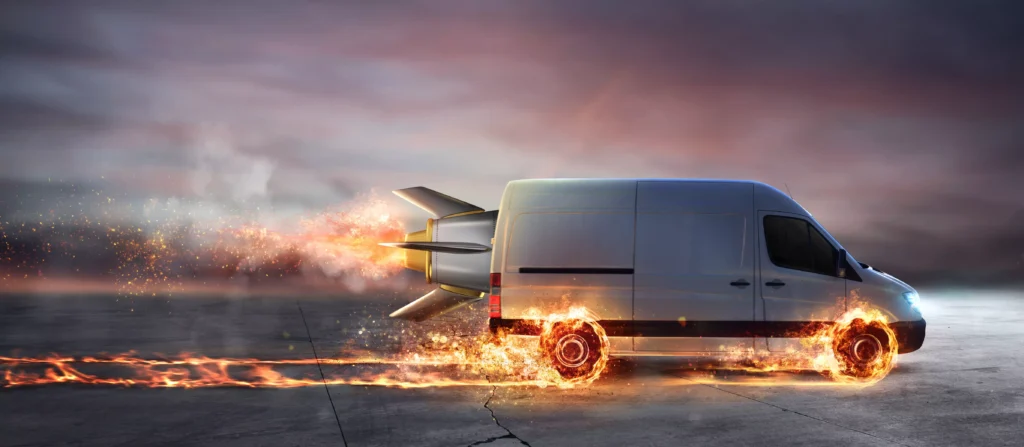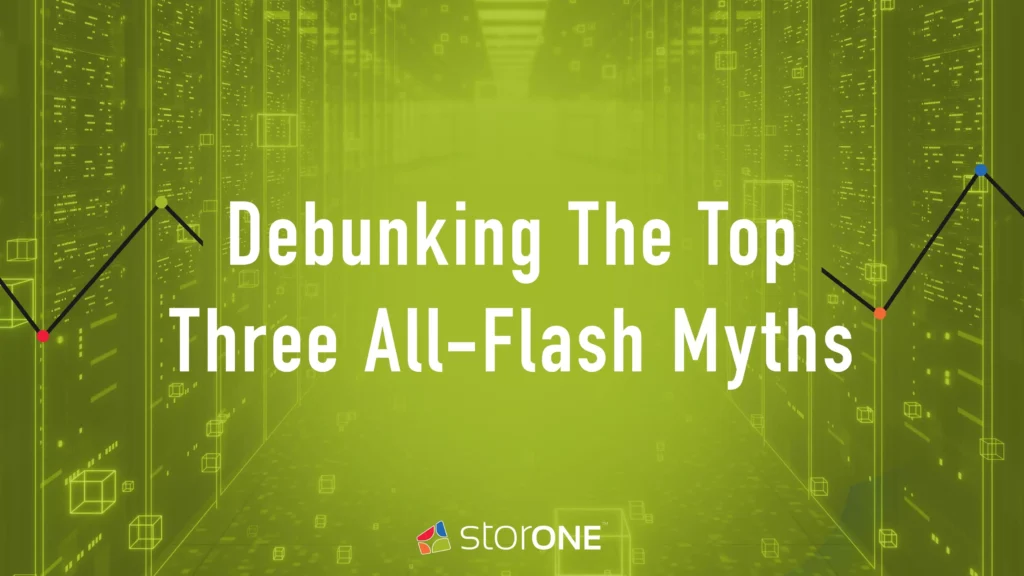While vendors are trying to convince them that they need all-flash, IT professionals are trying to understand how much flash is enough flash. Despite all-flash vendor claims, solid-state drives (SSDs) are not less expensive than hard disk drives (HDDs). In actuality, SSDs are about ten times more expensive than HDDs, so keeping all data on them all the time doesn’t make any financial sense. However, legacy hybrid storage systems that combine SSD and HDD have such a problem delivering a consistent performance that most customers feel they don’t have a choice but to pay the premium and buy an all-flash array (AFA).
Enough Flash for Active Data

In most data centers, only about 20% of the total data set is active, being read or written to within the last 90 days. The more data the organization stores, the lower, the active data set percentage. For example, organizations with 1PB or more typically only have 10% of data classified as active. While 10-20% is a small percentage, most legacy hybrid storage systems provide enough flash to store only 5% of the active data set. As a result, they constantly have to access data from the hard disk, which is part of the reason for their reputation for inconsistent performance.
With StorONE, IT planners can define how large a flash tier they want to use. StorONE makes this sizing easy because it uses affordable, off-the-shelf commodity SSDs, instead of expensive proprietary configurations. An obvious configuration is to buy enough SSD so that the entire active data set can fit. Some StorONE customers may add a little extra to further reduce HDD tier recalls.
Enough Flash for Performance
Another flash sizing requirement is ensuring that IT planners factor in enough SSDs to meet the performance requirements of the active data set. The reality is performance sizing should no longer be an issue because a single enterprise-class SSD can deliver more than 100,000 IOPS. This per drive performance means with twelve SSDs the system should deliver close to one million IOPS and few data centers need more than 500,000. This per-drive potential means that six to twelve SSDs should deliver more performance than most data centers need. The problem is legacy storage systems, AFAs and Hybrid, use a legacy IO engine, which can’t extract the maximum performance from those drives and will need 48 or more drives to deliver 100,000 to 200,000 IOPS.
StorONE’s efficient storage engine extracts maximum performance from each SSD, so IT planners can leverage more cost-effective high-density SSDs to further reduce costs. For example, a customer with 20% active data and 1PB of total data means a 200TB flash tier is ideal. Factoring in allocation for drive failure protection, the IT planner can meet the requirements using 24 x 15.3TB SSD while expecting more than 600,000 IOPS in performance. And, our drive-based licensing, Scale-for-Free, rewards customers for using those high-density drives.
The innovations within the StorONE engine optimize SSD performance. It also lays the groundwork for hybrid storage that promises to revolutionize the storage infrastructure by delivering all-flash performance at HDD pricing. The first step is to take the steps above to size the flash tier appropriately. The second step is to fix hybrid storage by rewriting the way the auto-tiering algorithm works.
Fixing Hybrid
As we discuss in our latest white paper, “Modernizing Auto-Tiering For Consistent High Performance”, StorONE rewrote the auto-tiering algorithm to proactively move data from the SSD tier to the HDD tier. This new algorithm ensures that SSD capacity is always available for inbound write I/O, solving the primary source of inconsistent performance, trying to move data to HDDs while also receiving new data to the flash tier. Next, StorONE, since it owns the I/O Engine, optimized the internal transfer speed between SSDs and HDDs. Then we rewrote erasure coding, ending long RAID rebuild times. Where other systems put the customer in an exposed state for days on end, StorONE’s vRAID can return them to a fully protected state within three hours without impacting production data access or performance.

All-Flash Performance, Hybrid Storage Pricing
Using off-the-shelf commodity SSDs and extracting maximum performance from them enables customers to leverage high-density drives to create flash tiers containing their entire active data set at a low cost. With this configuration, 90% or more of data accesses will come from the flash tier. Combined with StorONE’s innovations, the organization will see better than AFA performance almost all the time. A peak write burst won’t cause inconsistency, thanks to StorONE’s proactive grooming of the flash tier.
The role of the hard disk tier is to store the rest of the data. Again the StorONE engine’s efficient I/O transfer rate and ability to rapidly recover from drive failure means IT can also use high-density HDDs, 56 x 20TB drives that will deliver about 1PB of useable capacity. The entire solution can fit in a 5U appliance.
Hybrid Improves Data Resiliency
The right auto-tiering algorithm does more than save money; it enables a hybrid storage system to improve data resiliency. For example, StorONE’s vSnap delivers the full promise of snapshots. IT can schedule snapshots to occur as frequently as every thirty seconds and retain those snapshots indefinitely. These snapshots are space efficient, and as they age, they are automatically moved to the HDD tier, making long-term retention practical. Each StorONE Virtual Storage Container (VSC) can support over 500,000 snapshots.
Why retain so many snapshots? They provide ideal protection against ransomware attacks. Each StorONE snapshot is immutable. The granularity of frequent snapshots gives you the best access to the last known good copy of data, minimizing your data threat exposure window.
All-Flash Myths
AFA vendors spin a lot of myths against hybrid storage solutions. The problem is they are comparing their AFAs to legacy hybrid systems that don’t have the advantages of the StorONE Engine, which are maximum SSD utilization, high-performance auto-tiering, and the industry’s fastest recovery from drive failure. AFA vendors don’t have these advantages either; they hide their deficiencies by making their customers, unnecessarily, purchase more SSDs than they should. It is time to revisit hybrid storage!
In our live webinar “The Top Three All-Flash Myths…Debunked!” we’ll go through the AFA claims and show how the right investment in software development can debunk them.





